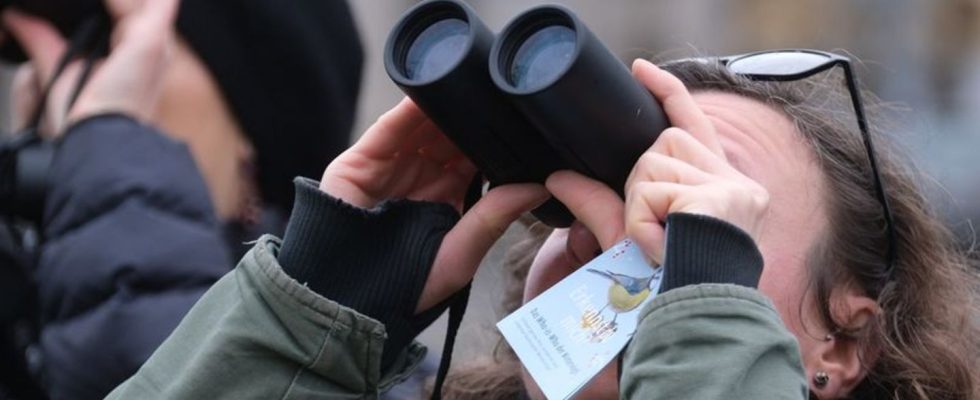natural reserve
“Hour of the Winter Birds” calls for counting birds
During the “Hour of the Winter Birds” citizens can once again watch birds for an hour. photo
© Sebastian Willnow/dpa
Watching birds is a popular pastime – and can provide professionals with important insights. That’s why citizens are once again asked to take part in the “Hour of the Winter Birds”.
Blue tit, house sparrow, robin and chaffinch – which ones Birds most often show up at the feeder? The Bird and Nature Conservation (LBV) in Hilpoltstein, Bavaria, and the Nature Conservation Association of Germany (Nabu) in Berlin want to know this again.
For the 14th time, the two associations are calling for the “Hour of the Winter Birds” from Friday to Sunday (January 5th to 7th). In what they say is Germany’s largest scientific participation event, citizens will once again be able to observe birds for an hour.
According to Nabu, almost 100,000 people took part last year and most often spotted house sparrows, great tits and blue tits. However, due to the mild temperatures, fewer feathered guests showed up at the feeders than usual.
This year the situation could be different despite similar weather, said LBV biologist Angelika Nelson. Last year there were particularly many acorns, beechnuts and spruce seeds, so that forest birds found enough food in the forests. This is not so extreme this year.
Changes in the bird world
With the “Hour of the Winter Birds” the nature conservation associations want to gain important insights into changes in the local bird world in cities and villages. A scientifically based comparison between the annual values is not possible, among other things because of the slightly different data base, but an indication of possible developments can be read.
It will be exciting to see which winter guests from Northern and Eastern Europe show up at the feeding stations this year, said Nelson. Observations of migratory birds such as chiffchaffs and black redstarts, which are now increasingly wintering in this country, are also interesting. However, the early onset of winter may have led to more of these songbirds heading south.
Anyone who would like to take part in the “Hour of the Winter Birds” should count the birds in the garden, on the balcony, in front of the window or in the park for an hour. The highest number of each species that can be seen at the same time during the hour is noted. The observations can be reported until January 15th via the internet, app, telephone or post.

